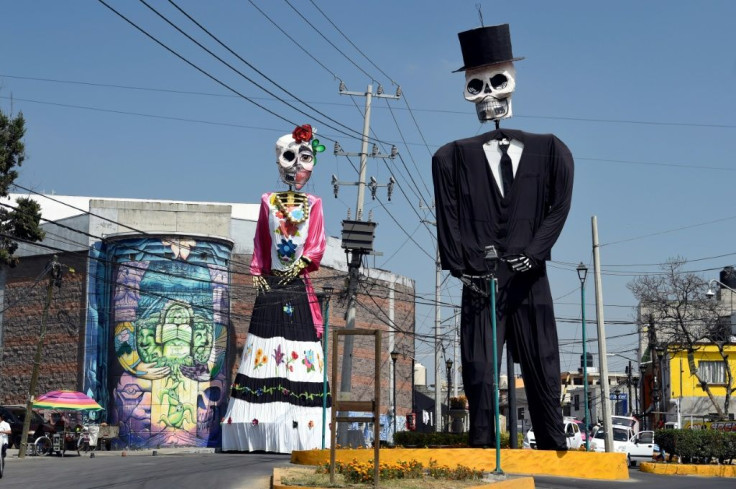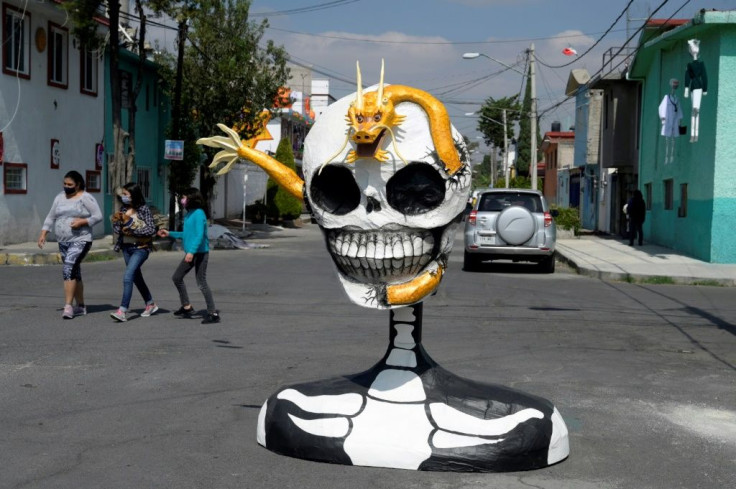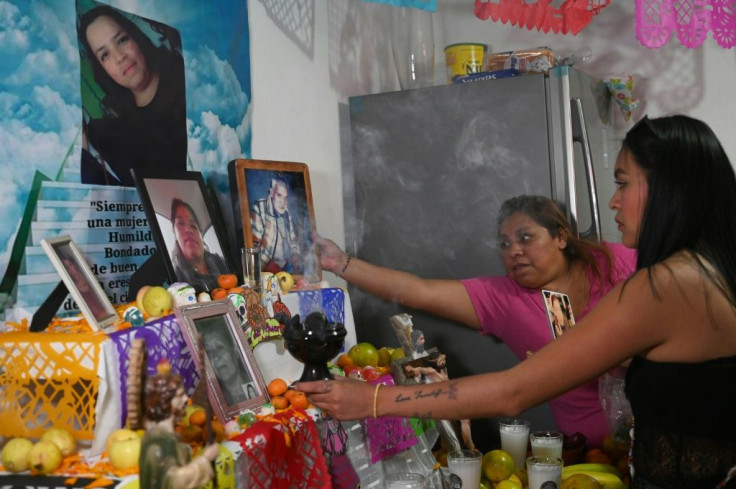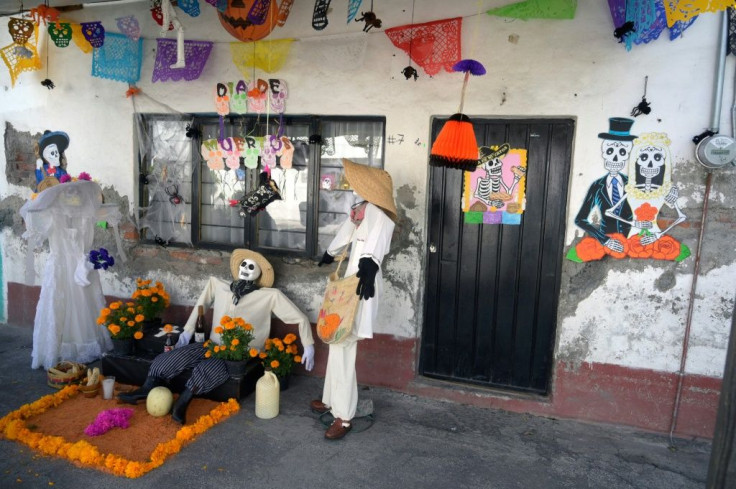Pandemic-hit Mexico Marks Somber Day Of The Dead
In Mexico death is usually a cause for celebration during the Day of the Dead festival, but this year parades are canceled and cemeteries closed due to the coronavirus pandemic.
From November 1-2, people across the country normally deck their homes, streets and relatives' graves with flowers, candles and colorful skulls.

The traditional festival, which in 2003 was added to the UNESCO Intangible Cultural Heritage list, centers around the belief that the living and the dead can commune during the brief period.
With its bright colors and cartoonish skeleton costumes, the Day of the Dead has become an internationally recognized symbol of Mexican culture.

But this year the authorities have urged people to stay at home to avoid spreading the coronavirus, which has killed more than 90,000 people in Mexico -- one of the world's highest tolls.
President Andres Manuel Lopez Obrador declared three days of national mourning for coronavirus victims to coincide with the festival.
Many families will remember those who have passed away in the privacy of their homes.

Janet Burgos decorated an altar with confetti, fruit and a photograph of her mother Rosa Maria who died in June aged 64 from suspected Covid-19.
"Now I begin to see what the Day of the Dead really represents," the 41-year-old said, adding that her mother had asked her and her siblings not to cry when she died.

"I want everyone to be happy, to have a party because I died. I don't want them to be crying, because life goes on," Burgos remembers her mother telling her.
The Day of the Dead, which is widely considered to be Mexico's most important festival, is rooted in the indigenous Mexica culture, mixed with Christian superstition brought by Spanish colonizers.
The Mexica were the dominant indigenous population in pre-Hispanic Mexico.
The modern celebration is based on a Mexica legend that after death, they traveled through the nine regions of the underworld, known as Mictlan.
Millions of Mexican families set up altars on which they place the personal belongings of the dead and adorn them with intensely orange marigold flowers and confetti in the shape of skulls.
Usually the capital hosts a parade of colorful skulls and "Calavera Catrinas" -- a famous skeletal representation of death created by cartoonist Jose Guadalupe Posada more than a century ago.
But this year virtual events are replacing the usual festivities.
Traditionally, many families also visit their loved ones in cemeteries and bring music, food and drinks.
However, this year many graveyards are closed to prevent crowds gathering and spreading the coronavirus, which has already prevented families from mourning properly.
Grieving relatives have been unable to hold funerals and in many cases the bodies have gone straight from the hospitals to the crematorium.
© Copyright AFP {{Year}}. All rights reserved.





















